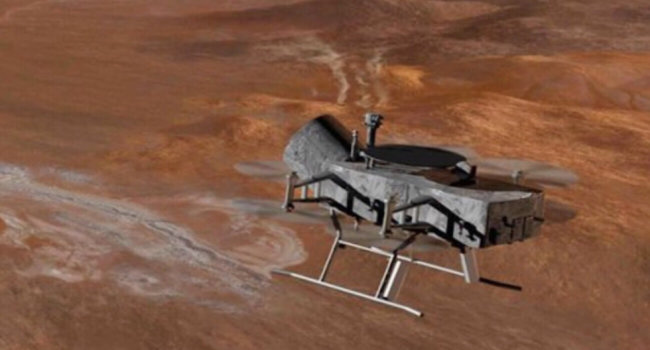
Unmanned aerial vehicles “captured” virtually all spheres of life on Earth. And now, it seems, the time has come to move these machines into space. One of the pioneers may be the Dragonfly drone, created on the basis of the applied physics Laboratory of Johns Hopkins University. Dragonfly, according to the researchers, can be used for exploratory missions on Titan, one of Saturn’s moons.
It is worth noting that the Dragonfly project is one of twelve projects under consideration by NASA management in the framework of space exploration New Frontiers. The winners will receive funding to implement their projects.
Titan selected for testing “space drone” is not accidental. Titan’s low gravity, dense atmosphere without foreign flying objects. The atmosphere of the satellite makes ineffective any technology the use of solar energy. As a source of energy the aircraft will be the generator Multi-Mission Radioisotope Thermoelectric Generator (MMRTG), similar to that installed on the Rover Curiosity. At night, the generator charges the battery of the drone, a charge which is enough for to day to make several flights with a total duration of about an hour. During the flight the unit will be able to travel up to 20 kilometers. The mission will last for 2 years, and during that time the drone will be able to explore a large area of the satellite.
If all goes according to plan, by the middle of 2019 will be made to the final selection of the mission, scheduled for launch in 2025.
Dragonfly – UAV for exploration of Saturn’s moon
Vladimir Kuznetsov